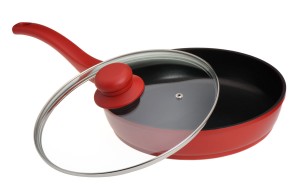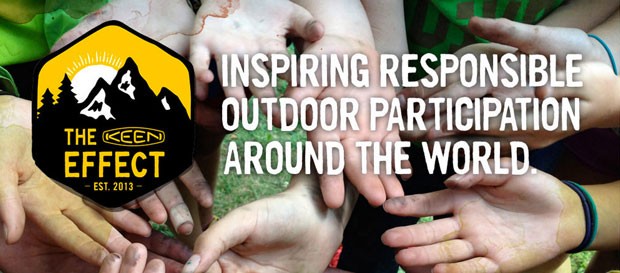- Tahoe’s Nevada Beach Tops the List of Hard-to-Book Campgrounds - 07/17/2024
- Cannabis Watershed Protection Program Cleans Up Illegal Grow Sites - 07/10/2024
- French Fire - 07/05/2024

When Teflon is exposed to high heat it can release its constituent chemical, PFOA, as a gas. There are no known cases of direct health problems for consumers, but workers producing Teflon are at increased risk for certain cancers, prompting the U.S. government to call for a complete phase-out of Teflon and related products by 2015. Photo: Hemera Collection
I’ve read conflicting reports about the dangers of non-stick cookware. I have a set of older non-stick pans and am not sure if I need to replace them. Are they harmful to use, particularly if they have a few scratches?
— Miriam Jones, Montgomery, AL
It may be time to upgrade your pans, given that the U.S. government has called for a complete phase-out of polytetrafluorethylene (PTFE, otherwise known as Teflon) and related products by 2015, due to health concerns. When Teflon is exposed to high heat it can degrade, which causes it to release its constituent chemical, PFOA, as a gas. This phenomenon can kill pet birds, and can’t be good for humans either.
While there are no known cases of airborne PFOA causing direct health problems for consumers, workers in plants where Teflon has been produced are at increased risk for cancers of the pancreas and the male reproductive tract. “Numerous studies have shown that PFOA alters reproductive hormones in the male, causing increased levels of estrogen and abnormal testosterone regulation and that PFOA or chemicals that break down into PFOA damage the thyroid gland,” reports Melissa Breyer of the website Care2.
Breyer adds that four organs or tissues in the immune system and at least nine types of cells that regulate immune function are targets of PFOA, and that scientists have been unable to find a level of PFOA that doesn’t damage the immune system: “Doses given to effected lab animals were minimal—and less, relatively, than levels found in children.” The fact that PFOA exposure led to testicular, pancreatic, mammary and liver tumors in rats doesn’t bode well for what the chemical may do to humans.
Of course, the risk of exposure is much lower for a person frying an egg at home than for a factory worker manufacturing PTFE for DuPont. In 2007, Consumer Reports Magazine tested PTFE-based non-stick pans from several manufacturers and found harmful airborne emissions of PFOA to be minimal. “The highest level was about 100 times lower than levels that animal studies suggest are of concern for ongoing exposure to PFOA,” reported the magazine. “With the aged pans, emissions were barely measurable.”
Some manufacturers are working on safer non-stick cookware using ceramic or silicone coatings free of PTFE or PFOA. But a 2009 survey of eight such alternatives by Cook’s Illustrated magazine did not identify any of the new choices out there high marks. “Not a single one of these ‘green’ pans was without flaws,” said the magazine. “In some, delicate eggs burned, thin fish fillets stuck, and steak charred on the outside while remaining raw within. Others stained or transferred heat inconsistently.” Some pans accumulated the browned bits known as fond when steak was seared, indicating unwanted sticking power.
Many foodies have resigned themselves to the likelihood that the idea of a non-stick pan might in and of itself be too good to be true. As such, cast iron, aluminum, copper and stainless steel each rate high for even heat distribution and for holding up well at high temperatures and frequent use. Used properly—such as by employing a little oil or butter to inhibit food from sticking—such pans can last decades.
CONTACTS: Care2, www.care2.com; Consumer Reports’ Kitchen Cookware, www.consumerreports.org/cro/kitchen-cookware.htm; Cook’s Illustrated “Green Skillets,” www.cooksillustrated.com/equipment/overview.asp?docid=20400.
EarthTalk® is written and edited by Roddy Scheer and Doug Moss and is a registered trademark of E – The Environmental Magazine (www.emagazine.com). Send questions to: earthtalk@emagazine.com. Subscribe: www.emagazine.com/subscribe. Free Trial Issue: www.emagazine.com/trial.













